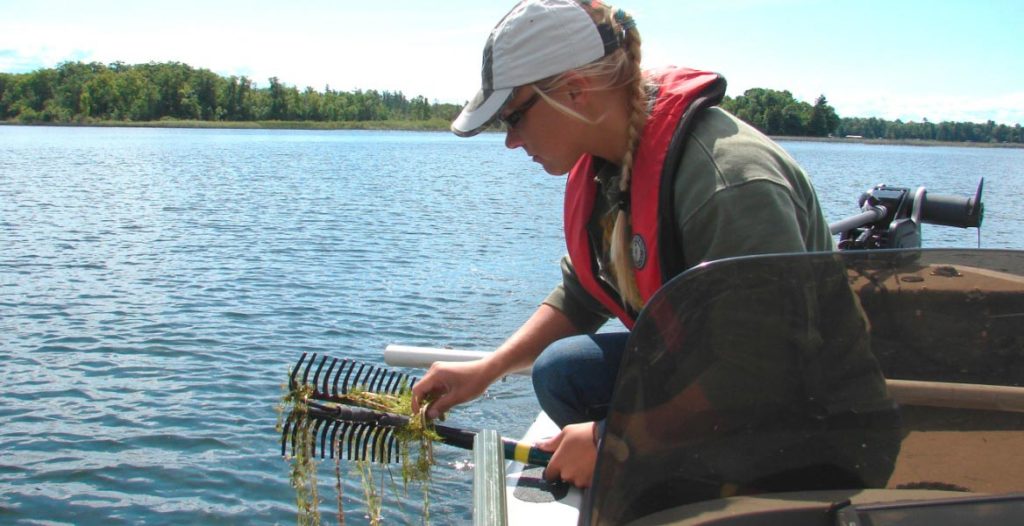
2017 Lake Vermilion Vegetation Survey
If a new invasive vegetation were to evade the Lake Vermilion boat inspection and boat cleaning firewall, we rely on early detection to give us the best chance of eradication or control.
The Vermilion Lake Association plans to survey all littoral waters to catalog native vegetation and to locate undetected AIS infestations. This effort began as a multi-year project in 2016 with an initial emphasis on locating any invasive curly-leaf pondweed which might have escaped from our small Everett and Stuntz Bay infestations.
With invasive starry stonewort and hybrid watermilfoil in the headlines in 2016, time is short. Vegetation experts from RMB Environmental Labs (Detroit Lakes) will be at Vermilion for three weeks in June and July to complete the remaining 70% of this critical early-detection survey. The emphasis will be on curly-leaf pondweed, starry stonewort, and Eurasian and hybrid watermilfoil.
RMB will also be cataloging Vermilion’s native aquatic plants, which are very important to maintain water quality and good fish habitat. For example, chara (muskgrass) is great for water quality and clarity. It is also necessary habitat for fish and a favorite food of water fowl. Coontail can draw large amounts of nutrients from the water increasing clarity. It provides excellent habit for fish and other aquatic creatures. Bulrush is found in most areas and is great for spawning habitat, filtering water, and preventing shoreline erosion. Larger leaf plants such as pondweeds also support spawning and protection for small fish.
Other native vegetation at Vermilion include Northern watermilfoil, white waterlily, yellow waterlily, Canada waterweed, water celery, Robins pondweed, and flatstem pondweed.
Read eVermilion